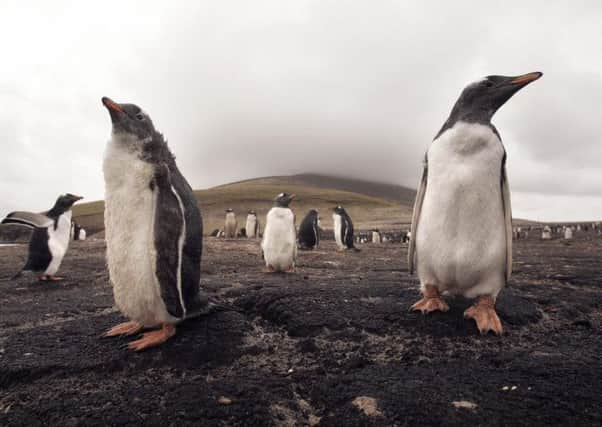Penguins dying due to new weather patterns


Not only are dwindling food stocks causing young chicks to die from starvation, but changing weather patterns are directly affecting survival chances.
And the study of Magellanic penguins – medium-sized birds standing about 15in tall and weighing about ten pounds – warns other bird species are also being threatened by dramatic changes in the weather.
Advertisement
Hide AdAdvertisement
Hide AdDowny penguin chicks, too big to be protected by their parents but too young to grow waterproof feathers, are struggling to survive in rainstorms as their body temperatures drop and nests become swamped.
And when a heatwave hits, because they lack waterproof feathers, they cannot take a dip to cool off and are increasingly dying from heat exhaustion.
University of Washington researchers looked at 27 years of data collected at the world’s largest colony of Magellanic penguins halfway up the Atlantic coast of Argentina at Punta Tombo.
Of the Earth’s 17 species of penguins, ten of them – including Magellanics – breed where there is no snow, it is relatively dry and conditions can be temperate.
Previous research has focused on the effect on populations of just one weather event. Biology professor Dee Boersma said: “It’s the first long-term study to show climate change having a major impact on chick survival and reproductive success.”
At the colony, 200,000 pairs resided from September through to February to have their young and, over the 27 years, an average of 65 per cent of chicks died per year, with some 40 per cent starving.
However climate change, a relatively new cause of chick death, killed an average of 7 per cent of chicks per year, but there were years when it was the most common cause of death, killing 43 per cent of all chicks one year and half in another.
Professor Boersma warned starvation and extreme weather were likely to increase as climate change took hold, and said: “Starving chicks are more likely to die in a storm. There may not be much we can do to mitigate climate change, but steps could be taken to make sure the Earth’s largest colony of Magellanic penguins have enough to eat by creating a marine protected reserve, with regulations on fishing, where penguins forage while raising small chicks.”
Advertisement
Hide AdAdvertisement
Hide AdThe data showed rainfall and the number of storms per breeding season had already increased. Research scientist Ginger Rebstock added: “We’re going to see years where almost no chicks survive if climate change makes storms bigger and more frequent during vulnerable times of the breeding season, as climatologists predict.”
Prof Boersma said heat this season took a greater toll on chicks than storms, yet death rates varied between the years. However, over time, it was expected climate change would be an increasingly important cause of death.
Research also showed penguin parents were arriving later to breed because fish stocks were arriving later too, and so chicks had not grown waterproof feathers by the time winter storms arrived.
Magellanic penguins also breed on the Chile side of South America and in the Falkland Islands, ranges they share with some 60 other seabird species. These species were also likely to suffer negative impacts from climate change, losing whole generations as the penguins had in the study area.
Prof Boersma said: “Increasing storminess bodes ill not only for Magellanic penguins, but for many other species.”